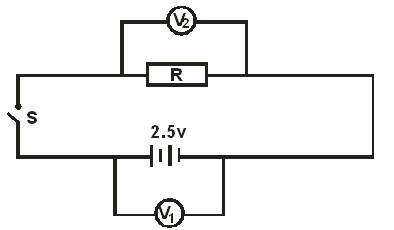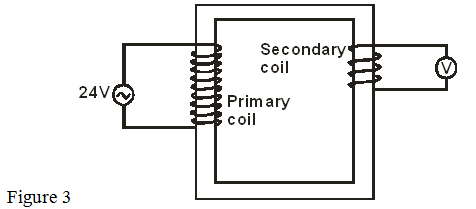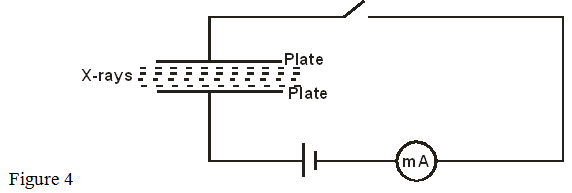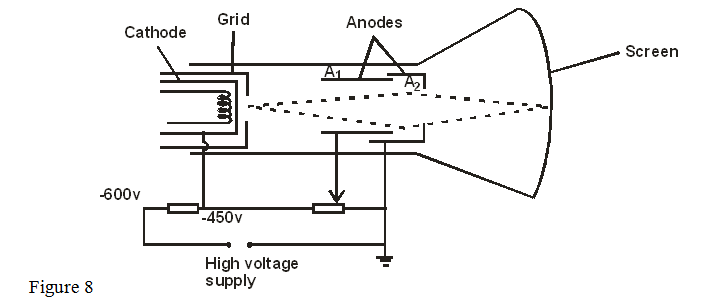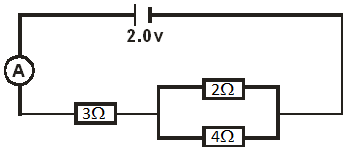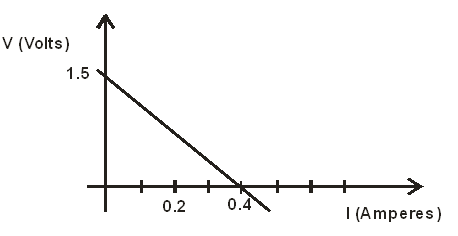SECTION A (25 MARKS)
Answer ALL the questions in this section in the spaces provided.
- An object 10cm tall is placed 20cm infront of a diverging lens of focal length 15cm. Determine the nature, position and magnification of the image by calculation. (3 marks)
- Explain why the image formed in a pinhole camera gets blurred when the hole is enlarged. (1 mark)
- Figure 1 shows a cell of e.m.f 2.5V connected in series with a resistor R and a switch S. Voltmeter, V1 and V2 are connected across the cell and the resistor respectively.
- State the reading of V1with S open. (1 mark)
- With S closed, V1 reads 1.6V. State the reading of V2. (1 mark)
- Figure 2 shows the image of an object formed by reflection in a converging mirror. C is the centre of curvature of the mirror. Complete the diagram to show:
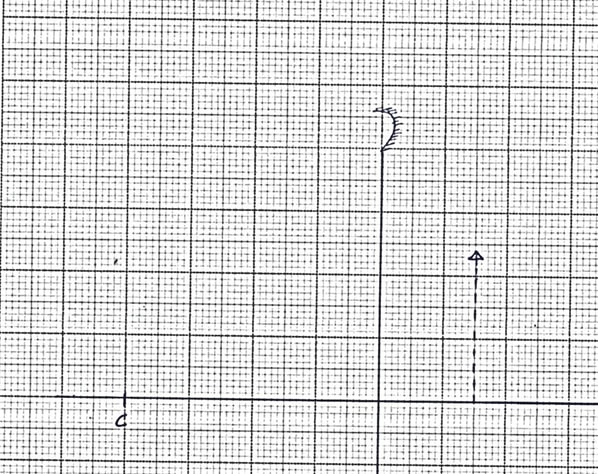
- How incident rays are reflected to form the image. (2 marks)
- The object position. (1 mark)
- The equation below represents a nuclear reaction in which two deuterium nuclei fuse to form helium and X.
- Determine the values of a and b. (1 mark)
- Identify X. (1 mark)
- Figure 3 shows a simple transformer connected to a 24v a.c source and an a.c voltmeter.
By counting the number of turns in each coil, determine the reading on the voltmeter (2 marks)
- In domestic wiring systems lamps in the lighting circuit are required to be in parallel and not in series. Sate two reasons for this requirement. (2 marks)
- Figure 4 shows a narrow beam of x-rays passing between two metal plates in air.
The plates are connected in series with a switch, a cell and a milliameter.
It is observed that when the switch is closed a current flows in the milliameter.
Explain this observation. (2 marks)
- The anode of an x-ray tube becomes hot when the tube is in use. State the reason for this. (1 mark)
- Draw a ray diagram to show how a ray of light may be totally internally reflected two times in an isosceles right-angled glass prism. (Assume that the critical angle of glass is 42o) (2 marks)
- Given that the velocity of sound in air is 330ms-1.
Calculate the wavelength of sound produced by a turning fork rated 0.44 kHz. (2 marks)
- Figure 5 below shows two bar magnets and soft iron ring placed between the magnets.
Complete the diagram to show the magnetic field pattern through the soft iron ring. (1 mark)
- Determine the power of a lens whose focal length is 40cm. (2 marks)
SECTION B (55 MARKS)
Answer ALL questions in this section in the spaces provided.
-
- Explain how a negatively charged electroscope gets discharged when the cap is touched with a finger using a simple diagram. (2 marks)
- Figure 6 shows capacitors A and B connected in series with a battery of e.m.f 4V.
Determine:- The effective capacitance of the circuit. (3 marks)
- The quantity of charge in capacitor A. (3 marks)
- The quantity of charge in capacitor B. (1 mark)
- Figure 7 shows an isolated positive point charge Q.
On the figure, sketch the electric field pattern around the charge. (2 marks)
-
- Figure 8 below shows a cathode ray tube in which a beam of electrons is cast on the screen.
- State how the electrons are produced in the tube. (1 mark)
- State how the electron beam is detected. (1 mark)
- State the reason for having a variable potential difference (p.d) at the:
- grid (1 mark)
- anodes (1 mark)
- Figure 9 below shows the wave form of a signal applied at the y-plates of an oscilloscope whose time base is switched to the scale of 20 milliseconds per centimeter.

Determine:- The period of the signal. (2 marks)
- The frequency of the signal. (3 marks)
- Figure 8 below shows a cathode ray tube in which a beam of electrons is cast on the screen.
- An X-ray tube requires an anode potential of 105V and a current of 0.02A to operate.
Determine:- The number of electrons hitting the target per second. (3 marks)
- The velocity with which the electrons hit the target. (e = 1.6 × 10-19c, Me = 9.0 × 10-31kg) (2 marks)
- In an experiment to investigate the relationship between energy of radiation and stopping potential, the results were shown in a graph below. (Velocity of light = 3 x 108 ms-1 and e = 1.6 x 10-19c).

From the graph determine:- The threshold frequency. (1 mark)
- The threshold wavelength. (2 marks)
- Planck’s constant. (3 marks)
- The work function. (3 marks)
-
- A ray of light is incident on a plane mirror as shown in figure below.
What is the angle of reflection? (1 mark) - The mirror is then rotated clockwise through 20o. Determine:
- The angle through which the reflected ray is turned. (2 marks)
- The angle between the incident ray and new reflected ray. (2 marks)
- Explain two ways in which power loss is reduced in transmission of mains electricity. (2 marks)
- The diagram below shows resistors connected in a circuit diagram.
- Determine the effective resistance of the above circuit. (2 marks)
- Determine the ammeter reading. (2 marks)
- A ray of light is incident on a plane mirror as shown in figure below.
-
- The figure below shows two coils A and B placed close to each other. A is connected to a steady D.C supply and a switch, B is connected to a sensitive galvanometer.
- The switch is now closed. State the observation made on the galvanometer. (1 mark)
- State what would be observed if the switch is then opened. (1 mark)
- Define the term electromotive force (e.m.f) of a cell. (1 mark)
- The graph in figure 11 shows how the voltage, v, varies with the current, I for a filament lamp.
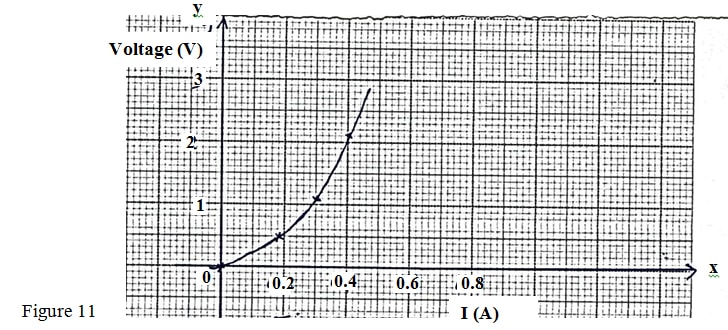
- From the graph, determine the resistance of the lamp when a current of 0.4A flows. (2 marks)
- State with a reason whether the device is ohmic or non-ohmic. (1 mark)
- The figure below shows the variation of voltage against current.
Given that E = V + Ir
Find from the graph,- The e.m.f, E of the cell. (1 mark)
- The internal resistance, r, of the cell. (3 marks)
- The figure below shows two coils A and B placed close to each other. A is connected to a steady D.C supply and a switch, B is connected to a sensitive galvanometer.
Join our whatsapp group for latest updates
Tap Here to Download for 50/-
Get on WhatsApp for 50/-
Download PHYSICS PAPER 2 - 2017 KITUI MOCK EXAMINATION.
Tap Here to Download for 50/-
Get on WhatsApp for 50/-
Why download?
- ✔ To read offline at any time.
- ✔ To Print at your convenience
- ✔ Share Easily with Friends / Students
